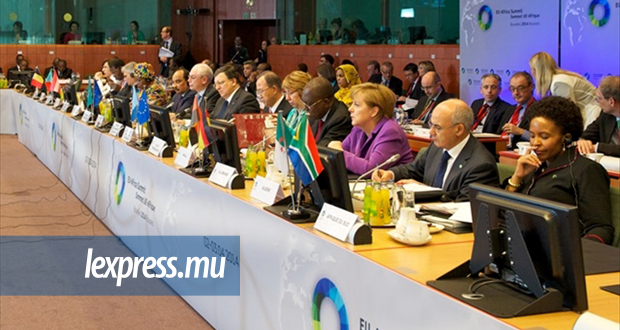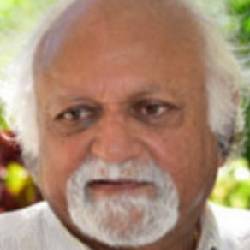Publicité
All talk or concrete partnership?
Par
Partager cet article
All talk or concrete partnership?

At the end of the month, more precisely on the 29th and 30th November, the summit between the African Union (AU) and the European Union (EU) will be held in Abidjan, Ivory Coast. It will be the fifth version of this “partnership”.
One can remember that the first summit EU-Africa (the EU insisted that the meeting be labelled as such to allow the participation of Morocco, which was not a member of the Organisation of African Unity (OAU), having withdrawn from it in 1984 when the organisation recognised the Sahrawi Arab Democratic Republic) took place in Cairo in the year 2000, after tough negotiations between the delegations of the OAU and the EU.
The responsibility to lead the OAU delegation fell upon me as the deputy general secretary, in charge of economic issues, development and cooperation. The EU only wanted a symbolic meeting ahead of the new millennium to ease their conscience and mark the occasion. On behalf of the OAU, I vehemently opposed the idea of having this summit turned into a simple photo shoot, insisting instead that it represents the beginning of a new era of partnership between Europe and Africa.
That’s how, after several negotiating sessions and switching between European and African capitals, the summit approved two documents: The Cairo Declaration and the Cairo Action Plan. The EU also eventually agreed to have similar meetings every three years to strengthen the partnership and take stock of the implementation of decisions previously taken and approved.
However, the next meeting only took place in 2007 in Lisbon. The process had been blocked by the refusal of the EU, led by the United Kingdom, of the participation of Zimbabwe, a country deemed a pariah. When the discussions resumed, the Cairo documents were conveniently archived and forgotten. We had to start again from scratch.
Yet, the Cairo Plan contained solid and concrete markers. Among other things, a mechanism was set up for the restitution of cultural assets in European countries to their countries of origin, in Africa. And also the return to African treasuries of money illegally amassed in Europe.
It is clear that, except for the return of Obelisk of Axum in Ethiopia, which for a number of years was magnificently erected in front of the headquarters of the Food and Agriculture Organization of the United Nations in Rome, there was no significant registered progress.
The ties that bind the African continent to the European Union go back to the colonial era. They became more structured after the wave of independence and the implementation of the conventions in Yaoundé, Lomé and Cotonou.
The conservation and the safeguarding of the markets were a major motivation for those ties. African states benefited from it. Their political survival depended on this umbilical cord still binding them to European cities.
New beginning
Over the years, this relationship of donor-recipient was consolidated even more. The EU had become the ineluctable source of funding for working capital and incidentally for development.
The African states, on the other hand, became the sources of raw materials essential for the European economy. The collective meetings were being held mainly at the level of the EU-Africa-Caribbean-Pacific countries, by using the instruments available in successive conventions.
The end of the Cold War, globalisation, internationalisation of the global economy, the setting up World Trade Organisation and the new African strategies to deal with the new global challenges, have significantly accelerated the tangible interactions between Africa and the EU. The common denominator for the African states was the integration of the continent, a significant objective in the Abuja Treaty.
However, the episodic conversation between the OAU and the commission of the EU, until the Cairo Summit, dealt mostly with armed conflicts in Africa. The economic and development issues were only discussed on the surface. In spite of the Joint Africa Europe Strategy adopted at the 2007 summit, which wanted to be a new beginning for the ties between the two continents and a break from the donor-recipient notion, it is obvious that the registered progress were limited to issues of peace and security.
The EU has made issues of democracy, governance, human rights, peace and security its battle horse. However, the primary African objective, integration, was still being flouted by its partner. The most prominent example that comes to mind is the imposition of the agreements on economic partnerships on Africa, balkanised again for this purpose.
The Abidjan Summit should be used by the two parties to express their interests without resentment and with honesty, like true partners.
The questions of regional and continental integration, of migration (even the tragedy of human trafficking), of development, of financing, of the restitution of capital and assets, of democracy, of governance, of commercial exchanges, should be the subject of decisions whose implementation would require a mechanism for a united and light follow-up, with the power to remove the obstacles on its way. The private sector and the civil society should have a voice in the chapter.
Those in Abidjan must have the courage to agree that the fruits of the four previous summits did not stand up to the promises made by its flowers. A new beginning is crucial for this partnership to overcome the tag that it’s all talk.
Publicité
Publicité
Les plus récents






